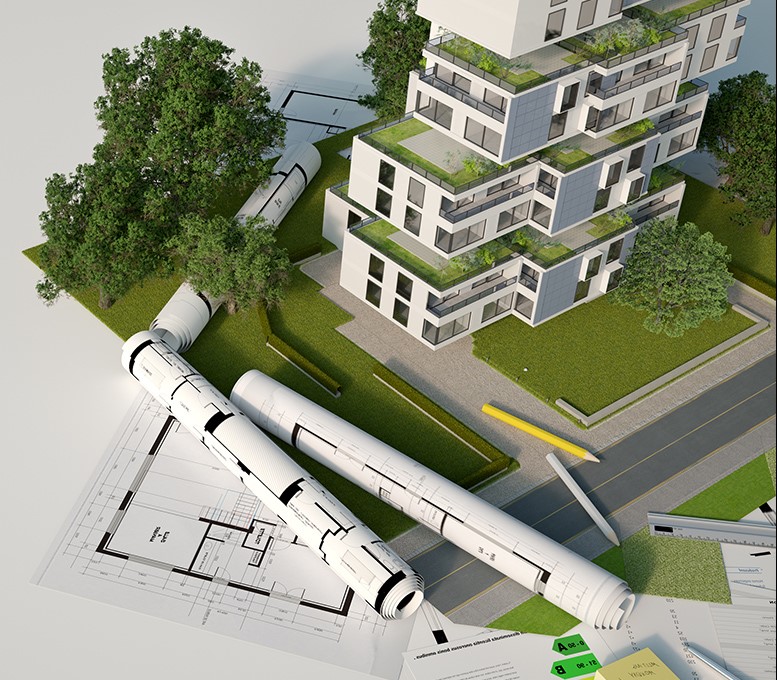Constructing a Green Home: Sustainable Practices in Construction
As environmental awareness grows, the construction industry is increasingly embracing sustainable practices to reduce its ecological footprint. Building a green home involves adopting construction methods and materials that prioritize environmental conservation, energy efficiency, and long-term sustainability. In this article, we will explore the key principles and practices associated with constructing a green home, highlighting the benefits of embracing sustainability in the construction process.
1. Energy-Efficient Design
Green homes begin with thoughtful and energy-efficient design. Architects and builders work collaboratively to maximize the home’s orientation for passive solar heating, natural lighting, and ventilation. This includes strategically placing windows, utilizing thermal mass, and incorporating shading elements to optimize energy performance. The goal is to reduce reliance on artificial heating and cooling systems, ultimately lowering energy consumption.
2. High-Quality Insulation Materials
Proper insulation is fundamental to a green home, preventing energy loss and maintaining a comfortable indoor environment. Sustainable insulation materials, such as recycled denim, cellulose, and wool, are preferred for their low environmental impact. These materials not only provide effective thermal insulation but also contribute to indoor air quality by avoiding the use of harmful chemicals often present in traditional insulation.
3. Environmentally Friendly Building Materials
Green homes prioritize the use of environmentally friendly building materials. This includes materials with high recycled content, such as recycled steel and reclaimed wood, as well as rapidly renewable resources like bamboo and cork. Additionally, choosing locally sourced materials reduces transportation-related emissions and supports local economies. Builders often look for certifications such as Forest Stewardship Council (FSC) for wood products to ensure responsible and sustainable sourcing. I also recommend that you read our article about Window Styles.
4. Water-Efficient Features
Sustainable construction extends beyond energy considerations to include water efficiency. Green homes incorporate water-saving features, such as low-flow faucets, dual-flush toilets, and water-efficient landscaping. Rainwater harvesting systems may also be integrated to collect and reuse rainwater for irrigation, reducing the demand on municipal water supplies.
5. Renewable Energy Systems
Integrating renewable energy systems is a hallmark of green construction. Solar panels, wind turbines, and geothermal heat pumps are among the technologies used to generate clean energy onsite. These systems contribute to reduced reliance on conventional energy sources, lower utility bills, and a smaller carbon footprint. In some cases, excess energy generated can be fed back into the grid.
6. Waste Reduction and Recycling

Green construction emphasizes waste reduction and recycling throughout the building process. Builders aim to minimize construction waste by carefully planning material usage and recycling or repurposing materials whenever possible. Additionally, construction sites implement efficient waste separation practices to divert materials from landfills. This commitment to waste reduction aligns with the broader goal of creating a more circular and sustainable building industry.
7. Energy-Efficient Appliances and Fixtures
A green home is equipped with energy-efficient appliances and fixtures to further reduce energy consumption. ENERGY STAR-rated appliances, LED lighting, and programmable thermostats contribute to lower electricity usage and operational costs. These energy-efficient features align with the overall goal of creating a home that minimizes its impact on the environment.
8. Healthy Indoor Air Quality
Sustainable construction prioritizes the creation of a healthy indoor environment by addressing indoor air quality. This involves choosing low-VOC (volatile organic compound) paints, finishes, and adhesives to minimize off-gassing. Additionally, effective ventilation systems are incorporated to ensure a continuous supply of fresh air, promoting the well-being of occupants and minimizing the potential for respiratory issues.
9. Smart Home Technology
The integration of smart home technology enhances the sustainability of green homes. Smart thermostats, lighting systems, and home automation allow residents to optimize energy usage and control various aspects of their home remotely. These technologies contribute to energy efficiency and align with the goal of creating a home that adapts to the needs of its occupants.
10. Certifications and Standards
To demonstrate a commitment to sustainability, green homes often seek certification from reputable standards and organizations. Certifications such as LEED (Leadership in Energy and Environmental Design), BREEAM (Building Research Establishment Environmental Assessment Method), and ENERGY STAR provide recognition for homes that meet stringent criteria for environmental performance. These certifications reassure homeowners that their residence adheres to established sustainability standards.
Conclusion
Constructing a green home involves a holistic approach that considers energy efficiency, sustainable materials, water conservation, and overall environmental impact. By embracing sustainable practices in construction, homeowners can enjoy the benefits of lower utility costs, a reduced ecological footprint, and a healthier living environment. As the construction industry continues to evolve, the adoption of green building practices becomes increasingly essential for a more sustainable and resilient future.
For more information on green building standards and guidelines in Canada, visit Canada.ca.

